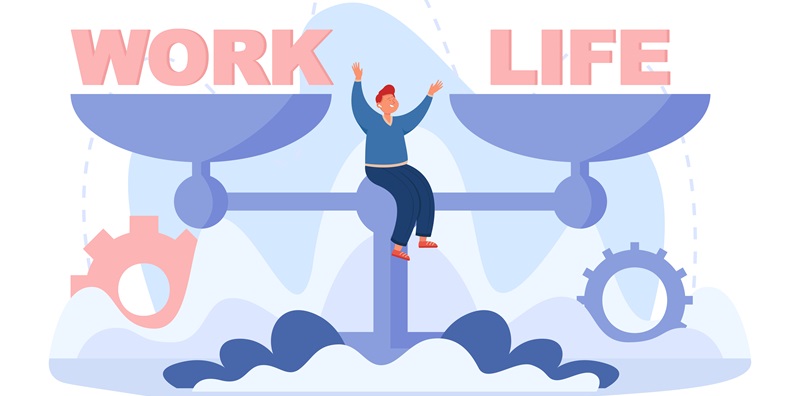Work-life balance has become a paramount concern for employees in recent years. It has shifted from being a mere desire to a non-negotiable demand. In this evolving landscape, the ability to provide work-life balance has emerged as a crucial differentiator for employers. Accommodating these evolving needs can help companies stand out from the competition and attract top talent. This article aims to explore various aspects of work-life balance and its increasing significance in the corporate world.
Remote work flexibility
The COVID-19 pandemic propelled remote work into the spotlight, demonstrating its viability and transforming it into a high-priority request for employees. The ability to work remotely, whether on a part-time or full-time basis, has become a key indicator of an employer’s commitment to work-life balance. Offering remote work options not only provides flexibility but also allows employees to save time and reduce commuting stress, resulting in increased productivity and satisfaction.
Customizable hours
In the quest for work-life balance, employees are seeking the freedom to adapt their work hours to better suit their personal lives. This flexibility enables them to accommodate family responsibilities, pursue personal interests, and achieve a better integration of work and personal commitments. Employers who support flexible scheduling empower their workforce to maintain a healthy work-life equilibrium while ensuring optimal performance and engagement.
Mental health support
Recognizing the growing importance of mental health, employees are now demanding access to counseling, therapy, and stress management programs as part of their benefits package. The prominence of mental health concerns highlights the need for employers to foster a supportive culture that prioritizes the well-being of their staff. By offering mental health support, organizations can help alleviate stress, boost morale, and enhance overall employee satisfaction and productivity.
Extended leave options
In addition to regular vacation days, employees are increasingly seeking additional paid time off, sabbaticals, or unpaid leave options. These extended leave opportunities allow individuals to take breaks for much-needed rest, travel, or personal projects without sacrificing job security or career advancement opportunities. By catering to this request, employers demonstrate their commitment to employee well-being and facilitate a better work-life balance.
Defining work-life balance
Work-life balance encompasses a delicate equilibrium between an employee’s responsibility to perform their day-to-day job functions and their desire to find fulfillment and belonging at work. It goes beyond simply dividing time between work and personal life. It emphasizes the need for individuals to feel valued, engaged, and respected in the workplace while also having the time and energy to pursue personal interests and maintain a healthy lifestyle.
Post-COVID Dynamics: Remote Work vs. Office Return
As the world recovers from the COVID-19 pandemic, an intriguing dynamic emerges: the tension between employees embracing remote work and certain organizations pushing for a return to the office. While remote work has provided newfound flexibility and work-life balance for many, some companies are eager to restore in-person collaboration. Striking the right balance between these two approaches will be crucial in meeting both organizational goals and employee desires for flexibility and work-life integration.
The evolving corporate landscape highlights the changing priorities of both employers and employees. Achieving work-life balance is no longer a luxury but a necessity. Employers must adapt to the changing expectations and needs of their workforce to attract and retain top talent. By offering remote work flexibility, customizable hours, mental health support, and extended leave options, organizations can create a culture that promotes work-life balance and fosters employee well-being. Responding to these changing dynamics is crucial for building a strong, engaged, and satisfied workforce in the modern era.

